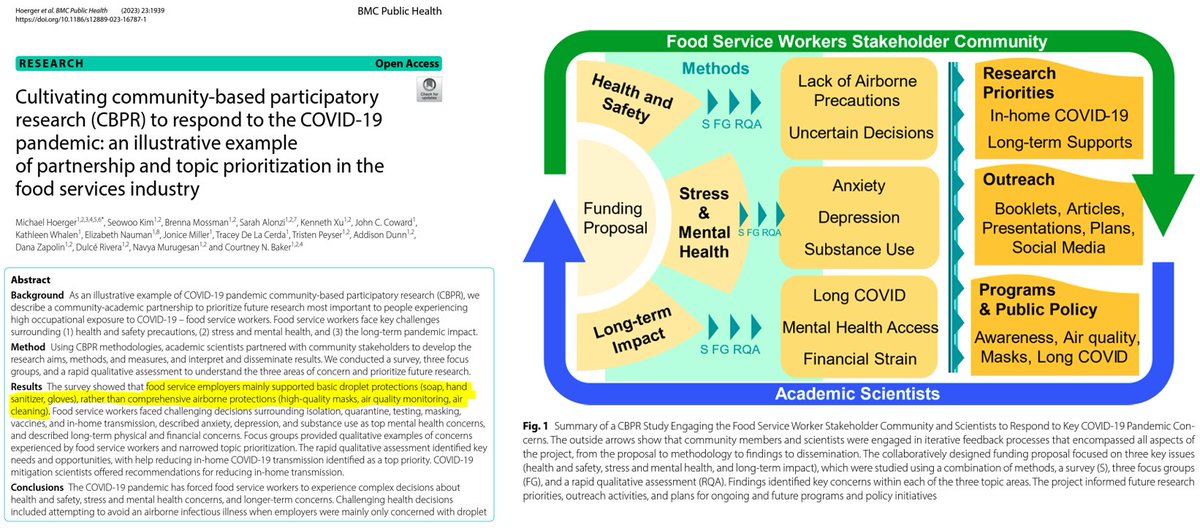New #LongCOVID article out today in one of the top science journals, @Nature.
The most striking finding to me was that more frequent vaccination reduced the risk of yearlong LC from the 4.3-5.2% range (in their sample, which is low) to just 0.38%. That's a >10x reduction.
1/
The most striking finding to me was that more frequent vaccination reduced the risk of yearlong LC from the 4.3-5.2% range (in their sample, which is low) to just 0.38%. That's a >10x reduction.
1/

Their sample is at the low end of #LongCOVID estimates overall, so for a fairer comparison, I could imagine 20% of the under-vaccinated group with LC & about 2% in the more frequently vaxxed group.
We could quibble on the base rates, but the risk reduction is the key stat.
2/
We could quibble on the base rates, but the risk reduction is the key stat.
2/
I always advocate for multilayered mitigation because a 0.4-2% chance of a new severe disability is considerable for individuals and populations. Effects are cumulative. Also, vaccines wane, and evading variants emerge unpredictably. Forward transmission is common. Etc.
3/
3/
With many public health officials acting like vaccines eliminate long COVID risk 100%, I think there is a backlash to argue "they don't prevent LC."
I'd like to see more discussion about the *extent* of risk reduction, rather than black-or-white do-or-don't thinking.
4/
I'd like to see more discussion about the *extent* of risk reduction, rather than black-or-white do-or-don't thinking.
4/
We see this everywhere. Debates about whether masks do or don't work. Whether tests do or don't work. Whether vaccines do or don't work. Whether air cleaners do or don't work.
It's all dichotomous (black-or-white) thinking, which serves a defensive process.
5/
It's all dichotomous (black-or-white) thinking, which serves a defensive process.
5/
I hope to see more messaging like this: "You should get the new booster because it will reduce your risk of getting sick and getting long COVID. It's not perfect. Few things are. That's why masking, testing, and air cleaning are also important."
6/
6/
Studies like this are important in advocating for more frequent and open vaccination policies. Many outside the U.S. cannot get boosted. My young children in Louisiana don't have access. We should be updating vaccines & boosting 2-3x/year. This is more evidence for that.
7/
7/
Here's the full article if interested. It examines many predictors of differing trajectories of #LongCOVID.
8/nature.com/articles/s4146…
8/nature.com/articles/s4146…
• • •
Missing some Tweet in this thread? You can try to
force a refresh

 Read on Twitter
Read on Twitter




















